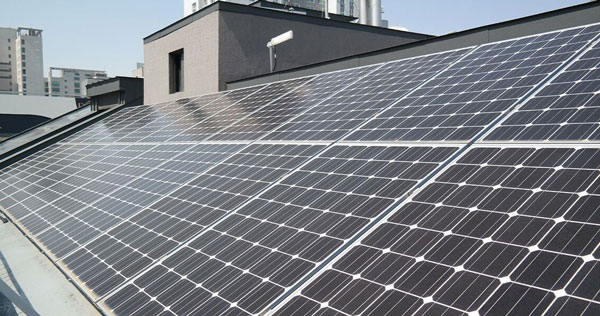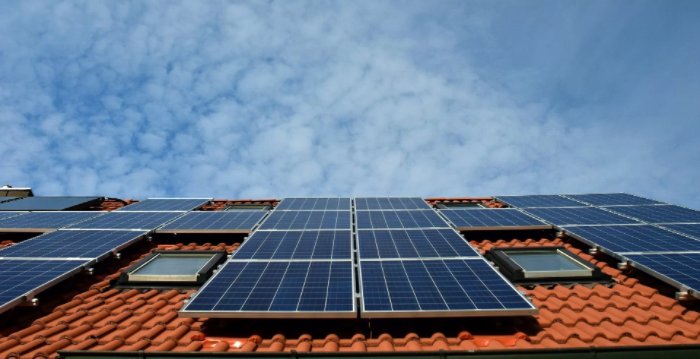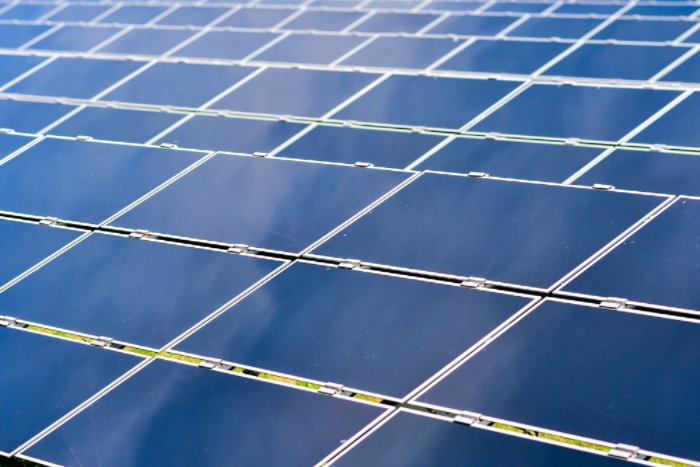Optimal Panel Orientation
In order to make the best of solar panels, their proper orientation is a critical factor. In the northern hemisphere, solar panels should be facing true south, whereas in the southern hemisphere, true north would be the best positioning. This will allow having direct sunlight all day long and, hence, the best energy absorption. Recent studies have shown that the best tilt angle would be equal to the location’s latitude. For example, for a place, located at the 35 th parallel north, the tilt angle of 35° would provide maximum solar incline. To adjust for the wintertime, it would also be beneficial to lift the angle by 15°, in order to catch the lower sun in the sky.
Angle Change For Different Seasons
As shown by the data, the change in the solar panels’ angle for the winter season will greatly improve the overall energy output. In addition, the change of the angle during summer can provide extra energy output as well. It applies to the latitude angle to be reduced by 10-15°. These changes can provide for up to 10% difference in energy output, which is a significant improvement, considering no cost to implement the system.
The annual increase will be 10%, if the angle would be shifted according to the above schedule.
Continuous Monitoring and GPS Tracking for Angle Adjustment
Gps solar trackers can determine the proper position and angle of the solar panels depending on the area and the density of sunlight. The shift of the solar panels in comparison with the best path may lead to as low as 1% loss of energy. This provides evidence that this solution is beneficial. In addition, the systems provide for an up to 25% increase in energy absorption.
The use of the recently developed systems, such as machine learning , have allowed predicting the best panel tilt and position depending on the previous data for sunlight and weather. This will allow businesses to provide for the solar panels to change their positioning during the day, hence increasing the overall effectiveness by at least 15% in the long-term prospect.
Regular Upkeep
The efficiency of the solar panel depends not only on the foundation but also reliable maintenance. It ensures that the panel can operate at the maximum possible capacity throughout their lifecycle.
Regular cleaning
Dirt, dust, and other residues can reduce solar panel efficiency. Several reports have indicated that the performance can increase more than 20% when these panels are cleaned regularly. The places where there may be more dust, such as deserts or near factories and agricultural land, the frequency should be increased. In a desert climate, monthly cleaning may be required, whereas elsewhere semi-annual cleaning may be sufficient.
Pro cleanliness advice: Robotic cleaning technologies have been developed over the second decade of watching, allowing to reduce the cost of labor. These will keep the panel clean and in similar conditions such as outdoor.
Inspection and maintenance
Routine inspections are needed to identify and address many of the problems that the solar panels may face. This includes micro-cracks, delamination, and PID. It is important to do the checks to determine that all connections are secure and that there is no rust in the systems supports and cable. Using thermal images in solar panel inspections can verify what the human eyes cannot see. This often means cells that are forced to work twice as hard can overheat more than others and to the point, that a panel may outputted drop as much as 15-25%.
Performance monitoring
Performance monitoring is used to monitor the performance of these solar panels output energy in real-time. In addition to this, it also ensures the implementation team is alerted when there are performance drops that require anything from repair to repositioning the panel. In most systems, the performance is controlled and monitored remotely. They may also have system integrations where data analytics are used to predict future problems. Incorporation of smart monitoring technology can potentially raise the overall efficiency as they are able to spot problems that may lead to reduced output or complete malfunction before they cost serious losses.

Upgrading System Components
As an investment in a premium sustainable solar panel system, businesses can upgrade their components to boost their performance. Not only is the latest technology enhancing efficiency, but also extending the lifespan of the entire system.
Inverters and Controllers
The inverter is best-suited component of the solar power system to assess its inefficiency . Compared to old models, which have a maximum efficiency rating of 94%, the efficiency of the inverter is particularly enhanced, reaching 98% . Hence, new inverters reduce energy loss by 20 percent. New solar charge controllers have also enhanced efficiency significantly. MPPT controllers correctly guide the charge generated from solar panels. The overall charge efficiency of solar panels is enhanced by an additional 30% relative to PWM controllers enhanced efficiency varies, however, with environmental conditions and the configuration of the panels.
Solar Panel Technology
Identical old solar panels can be replaced with the latest, higher power generating panels. The power generated is not even close when switching from an older 15-percent-efficient panel to a 22-percent-efficient panel . Another established method of boosting the energy produced is using bifacial solar power panels, which collect sunlight both above and below, reflecting sunlight over 10% of the energy . It is most beneficial in locations where there is a high quantity of reflection of sunlight reaching the surface and scattered light impacts the panels.
Energy Storage Solutions
Using lithium-ion batteries is a great modern option. This battery unit has a higher energy density and longer longevity than the typical lead-acid batteries. The energy storage and retrieval efficiency, needing only 5%, is also higher by up to 90% . Energy storage and retrieval demands are facilitated by battery upkeep.
Implementation Strategy
When all performance bottlenecks have been recognized by the complete energy audit of a business, the best upgrade options must be identified . New components should be purchased by starting with the highest secondary effect, c which can be performed by professionals. New components adopt the old solar panel system at a high performance level. . As a result, the power utilized drops significantly, hence enhancing the total efficiency and sustainability of the solar panel system.
Utilizing Solar Concentrators
Solar concentrators represent a dynamic technique to radically increase the efficiency of utilizing solar energy. This technology primarily relies on focusing the sunlight onto a considerably smaller, highly efficient photovoltaic area, resulting in more power output without having to increase the size of the panel. Since solar concentrators can multiply the light intensity collected by the panel, the efficiency of the device increases proportionally. In addition, the majority of designs requires less surface to install, which only enhances the number of effective applications of the technology. For instance, having less usable surface land for solar panels may make installation of regular systems less plausible than the more efficient solar concentrators.
There are multiple types of solar concentrators, which include such designs as parabolic troughs, Fresnel reflectors, and heliostat field collectors. All of them support the operation by focusing the sunlight with the use of mirrors or lenses to reduce the loss of energy received from the sun. Parabolic troughs are positioned around their reflective source in the form of the highly specific trough channel to increase the concentration by up to 30 times the normal sunlight , which makes them most appropriate for both photovoltaic and thermal power. The Fresnel reflectors, in contrast, use flat, thin segments of mirrors to reflect light through the narrow focal area, which is more cost-effective and easier to manufacture than the previous version. While LOSA et al. claim that typical photovoltaic cells have an efficiency of about 20% , the concentrators can bring up to 40%, or more under the optimal conditions.
The installable area occupied by the solar panels could vary tremendously; however, the solar concentrators are still considered more cost-efficient. Even though their installation may require higher initial costs, the effectiveness and efficiency of the equipment delivery can significantly increase the cost-benefit of the investment. The automation tracking systems should be used to ensure the most efficient way of distributing power and energy between every panel and the calculations show that in comparison with regular chemical batteries or even lead ones.
Battery Storage Solutions
For solar power systems, it is crucial to utilize advanced battery storage solutions to achieve higher effectiveness and reliability. Proper storage of excess energetic power allows utilizing it when there are not enough energy resources to use solar power, such as during the night. Therefore, choosing the right batteries for a solar system is crucial for ensuring its stable operation and higher effectiveness. Below are four factors that one needs to consider when choosing a type of battery.
Combined Cycle Operation
Any battery system can be charged from the solar power system and provide the generated energy when there is not enough solar power – whether during the nighttime or a cloudy day. Combined cycle recording refers to transferring energy to the grid when the batteries are full, and there is not enough additional power. At this point, all the excess energy not being utilized within the household can be traded.
Operating Range
Capacity at small and large states of charge: While some battery systems tend to lose their efficiency and ability to store power when their charge falls or increases significantly, modern batteries have wide ranges of efficient working conditions. State of charge, or SOC, represents the percentage of the battery that is currently charged. SOC is an important metric that the energy management software uses to understand how much power a battery can currently store. The working range for modern lithium-ion batteries is relatively high – typically between 30% and 95% of their capacity.
Expensiveness
Lithium-ion batteries are often considered more effective than lead-acid batteries because they provide more than 95% efficiency and last more than 10 thousand cycles. Meanwhile, lead-acid batteries have lower efficiency, usually around 80-85%, and are operationally efficient up to 2,000 cycles or slightly more . However, the key consideration should not be the difference in cost, since in either case, the energy savings will usually outweigh the upfront differences by the time any battery gives out.
Whether all things are considered, it is clear that one should also consider how much the battery will cost in terms of energy savings over its lifespan.
Shading Management
Having efficient shading management is paramount for keeping the high effectiveness of solar panel installations. Even if only a few panels are in the shade, the amount of energy loss may be substantial. In addition, being able to prevent shadows from falling on solar panels is important even when the relative number of such installations is small, as when one solar panel is in the shade, it can decrease overall effectiveness of other solar panels present.
Ways to Prevent Shading
There is a range of ways in which shadows can fall on solar panels, buildings and trees being the most common sources of shade . A study Reneweconomy.com.au shows that, on a scale of one to ten, the dropping of a shadow in the form of a mere one-tenth shadow reduces energy production by about half. This is due to the connection of the panels in a series, which makes it so that the weakest, or most shaded, panel in it to limit the production of all the panels . In order to avoid such a case, businesses can use microinverters or power optimizers. Microinverters, unlike the traditional string inverters, allow each solar panel to perform independently – meaning that the amount of shade on one such panel will not reduce the output of electricity of other panels. Power optimizers are another way to address this problem, helping to adjust the voltage of each panel to its suitable level of the moment. It was also found that power optimizers increase the overall system efficiency by as much as 25% even when shade is not present .
Strategic Approach and Site Analysis
There are also other ways in which this problem can be addressed. First and foremost, a proper site analysis has to conducted in advance, taking into account buildings and trees which can potentially overshadow the panels. Other ways in which it may be beneficial is using a modeling software like PVsyst, HelioScope or AutoCAD, which can help analyzing potential blocks to proper sunlight and making a decision about where to place solar panels based on that.



